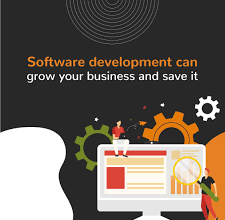AI’s $500B Impact on Jobs: India’s Turning Point in the Future of Work

As artificial intelligence (AI) races ahead in innovation, the question isn’t if it will impact jobs—it’s how deeply and how soon. At the ET Soonicorns Summit 2025 in Bengaluru, economists, entrepreneurs, and policymakers came together to unpack the AI explosion and its projected $500 billion contribution to India’s economy by 2030.
This isn’t a theoretical future. It’s breaking national news, and the implications for India’s workforce are enormous.
The $500 Billion AI Boost: Where It’s Coming From
A report released at the summit by NASSCOM and the Ministry of Electronics and IT estimates that AI could add $450–500 billion to India’s GDP by 2030. The value is expected to come from:
-
Automation of repetitive tasks across sectors like banking, retail, and customer service.
-
AI-enhanced productivity in manufacturing, logistics, and agriculture.
-
New AI-driven products and platforms, especially in health tech and edtech.
-
Data economy expansion, fueled by India’s UPI and digital public infrastructure.
India’s vast, tech-savvy youth population puts it in a unique position to capitalize on this transformation—if the workforce can adapt in time.
A Job Creator, Not Just a Job Killer
Contrary to the fear that AI will wipe out millions of jobs, speakers at the summit emphasized that AI will also create millions of new roles—especially in:
-
AI engineering and machine learning
-
Data annotation and prompt engineering
-
AI ethics and policy compliance
-
AI-integrated healthcare and agriculture advisory
-
Robotics support and maintenance
Upskilling: The Urgent National Priority
While AI’s economic potential is massive, its benefits won’t be evenly distributed unless India makes upskilling a national mission. Key initiatives launched or expanded this year include:
-
Skill India Digital, which now offers AI courses in regional languages.
-
AI in Schools, an NCERT-backed pilot program for Classes 8–12.
-
Corporate-Academic alliances, such as Infosys partnering with IIT Madras to offer AI certificates for mid-career professionals.
According to the World Economic Forum, over 50% of India’s current workforce will require reskilling in the next five years. This is especially urgent in semi-urban and rural areas, where the digital divide still runs deep.
Sector Snapshot: Who’s Most at Risk—and Ready
Here’s how AI adoption is reshaping five major Indian sectors:
| Sector | Impact of AI | Job Risk Level | Upskilling Opportunities |
|---|---|---|---|
| IT & Services | Workflow automation, chatbots | Medium | High (AI Dev, Prompt Eng.) |
| Manufacturing | Predictive maintenance, robotics | High | Moderate (IoT, AI Ops) |
| Agriculture | Crop analytics, automated irrigation | Low | High (AI advisory roles) |
| Healthcare | AI diagnostics, telemedicine | Medium | High (Health AI Assistants) |
| Education | Adaptive learning platforms | Medium | High (AI content creators) |
Government and Industry: A Rare Alignment
For perhaps the first time in a decade, India’s central government, major tech companies, and educational institutions are moving in lockstep to address the AI wave. The National AI Mission, BharatGPT initiative, and IndiaAI Innovation Centre are just a few examples of this alignment.
Why It’s Making the Latest National Headlines
This shift isn’t just about technology. It’s about millions of livelihoods. It’s about preparing an entire generation for jobs that didn’t exist 5 years ago. It’s about making sure India doesn’t just consume AI technology but builds and exports it.
That’s why the conversation around AI’s $500B impact on jobs is now part of the latest national headlines—because what’s at stake is not just our economy, but our future.
Final Thoughts
AI will reshape work in India faster than we expect—but whether it empowers or displaces workers depends on what we do now. Investing in education, rethinking job roles, and creating policy guardrails are not optional—they’re urgent.
India stands at a critical junction: with the right choices, we could become the AI talent capital of the world. With the wrong ones, we risk falling behind in the very revolution we helped spark.
Frequently Asked Questions (FAQ)
1. How will AI contribute $500 billion to India’s economy?
AI will drive economic growth by automating repetitive tasks, improving productivity in industries like agriculture, healthcare, and logistics, and enabling the creation of new AI-based services and platforms.
2. Will AI replace jobs in India?
While AI may automate some roles, it is also expected to create millions of new jobs in areas such as AI development, data science, robotics, AI ethics, and machine learning operations. The focus is shifting from job loss to job transformation.
3. What are the top sectors affected by AI in India?
Key sectors include IT services, manufacturing, healthcare, education, and agriculture. Each of these is undergoing rapid transformation through AI integration and automation.
4. How is India preparing its workforce for AI disruption?
The government and private sector are investing in skilling programs, online courses, and AI integration in school curriculums through initiatives like Skill India Digital, National AI Mission, and partnerships with IITs and tech firms.




